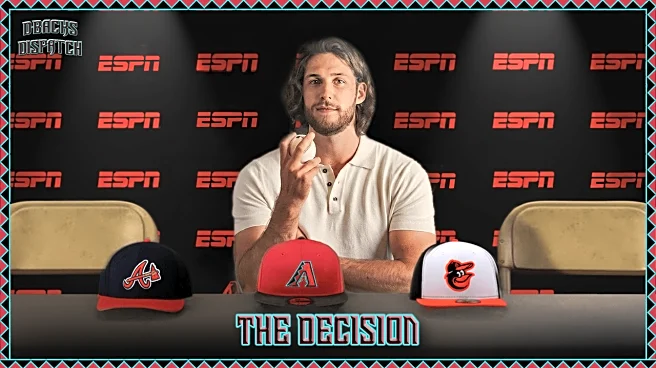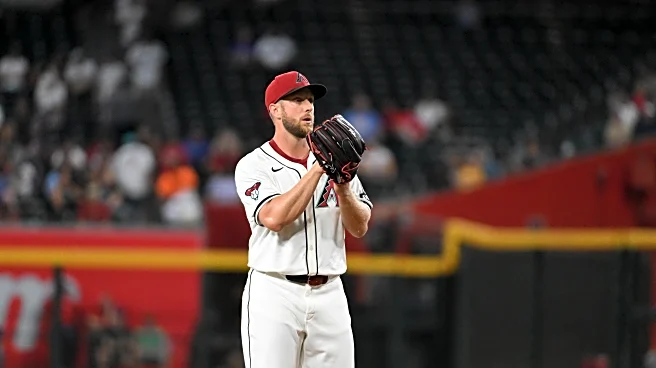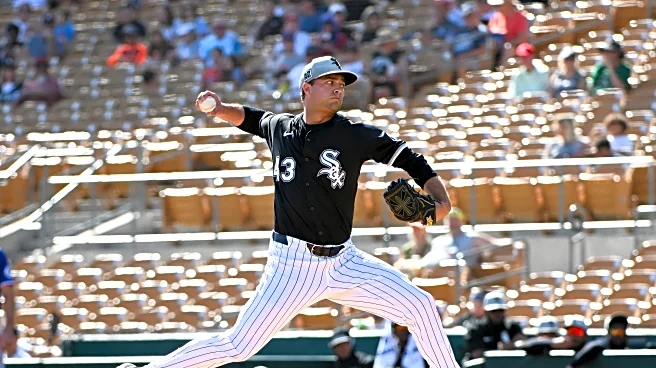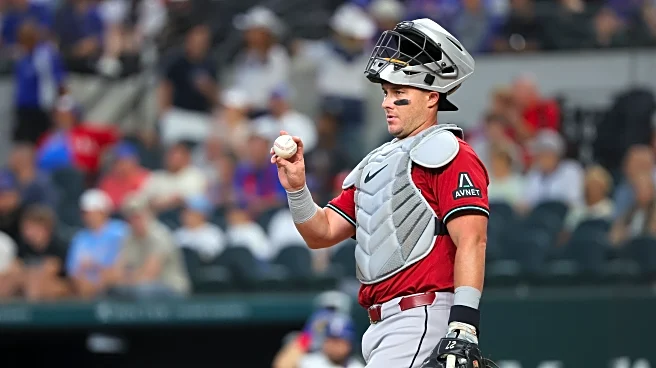Zac Gallen Rejects the Qualifying Offer
The news anticipated for weeks officially happened on Tuesday at the 4:00 p.m. ET deadline: Zac Gallen turned down the Diamondbacks’ one-year, $22 million qualifying offer. While a return to Arizona hasn’t
been officially ruled out, the consensus is that the right-hander will likely sign with another club.
While the rejection was no surprise, Gallen recently poured some fuel on the reunion fire while speaking to the media at a Shamrock Boys & Girls Club event in Phoenix. He said that he would love to be back in Arizona for the rest of his career, but cautioned that such decisions aren’t always solely up to the player.
A Legacy of Impact
Before diving into the financial mechanics, it’s worth remembering what Gallen meant to this franchise. If this is indeed the end, he departs as undeniably one of the most impactful starters in team history, boasting a career 3.58 ERA and 3.65 FIP for the Snakes.
“He really started to look like the ace we were accustomed to in the second half,” Brandon noted on the pod, referencing Gallen’s 3.32 ERA post-trade deadline.
The Compensation Factor: Inside the $50M Rule
As Brett broke down in the episode, Gallen’s rejection guarantees the D-Backs draft pick compensation if he signs elsewhere. Because the Diamondbacks are a revenue-sharing recipient, the quality of that pick depends entirely on the total value of his next contract.
- Scenario A: If Gallen signs for over $50 million, the D-Backs get a pick between the first round and Competitive Balance Round A (roughly pick 30-35).
- Scenario B: If he signs for under $50 million, the pick drops to after Competitive Balance Round B (roughly pick 75).
If Gallen signs a lucrative deal, the D-Backs essentially get a “bonus” first-round pick to restock their farm system. If he settles for a cheaper “prove-it” deal, that asset loses significant value.
Watch this video to get the full Brett’s Breakdown about Gallen’s choices:
The Boras Problem
There is a lingering fear involving agent Scott Boras, who has a history of shooting high and dragging negotiations deep into the off-season. If he aims unreasonably high, maybe seeking an Aaron Nola-type deal of $180 million, and the market doesn’t bite, Gallen could be forced into settling for a contract similar to Jordan Montgomery in 2024.
Montgomery signed a short-term deal with vesting options well after spring training began. If Gallen falls into a similar two-year, ~$45 million deal with an opt-out, the D-Backs would lose over 40 slots in draft position.
James McCann Re-Signs with the Diamondbacks
While Gallen’s future is up in the air, the D-Backs secured a known commodity by re-signing veteran catcher James McCann to a 1-year, $2.75 million deal. The contract includes incentives potentially pushing the total value to $3.25 million.
The signing, first reported by The Athletic’s Ken Rosenthal, fills the first major need on Arizona’s off-season checklist.
The Corbin Burnes Connection
McCann’s journey to the desert has a fascinating backstory. Midway through the 2025 season, it was actually Corbin Burnes, Arizona’s injured ace and McCann’s former teammate, who urged GM Mike Hazen to sign the veteran backstop.
That recommendation paid off immediately, as McCann stepped in for an injured Gabriel Moreno and delivered a resurgent performance.
How McCann Changes the Staff
McCann is coming off his best offensive season since 2020, slashing .260/.324/.431 with five homers. However, Hazen emphasized that the signing was primarily a “defensive-minded decision.”
The Dbacks Dispatch crew highlighted exactly why this works, pointing to a staggering difference in pitching performance. As noted on the show, the staff posted a 4.02 ERA with McCann catching, compared to nearly 4.80 with Gabriel Moreno.
McCann also became Gallen’s personal catcher down the stretch, coinciding with the ace’s second-half resurgence. Manager Torey Lovullo praised McCann’s impact, stating that some of his conversations with pitchers were on a “PhD level.”
Not a Competition
To preserve the clubhouse dynamic, the new contract includes $500,000 in bonuses based on days spent on the active roster rather than plate appearances. GM Mike Hazen explained that this structure was intentional to ensure it doesn’t become a competition for playing time with Moreno.
Brett compared McCann’s role to that of Evan Longoria in 2023: a veteran “Evan Longoria-esque kind of voice” who holds the team accountable.
“If you’re serious about bringing back Gallen, you’ve got to bring back James McCann,” Brandon argued on the podcast. This move secures the clubhouse culture and provides a safety net for Moreno’s health.
ESPN, NBC, and Your Wallet
The podcast took aim at MLB’s increasingly confusing broadcast future. A new three-year media rights agreement (2026-2028) totaling nearly $800 million annually has shifted the landscape, and Arizona is right in the center of the changes.
Starting in 2026, NBC and Peacock will take over Sunday Night Baseball and the Wild Card Round, kicking off with the D-Backs playing the Dodgers on Opening Day (March 26) on NBC. ESPN will handle exclusive in-market streaming rights for the D-Backs and MLB.TV, with games likely housed on the ESPN app. Netflix enters the mix with special events like Christmas Day games, the Home Run Derby, and Opening Night (featuring Yankees vs. Giants), while Apple TV+ will continue its existing Friday Night Baseball package.
What Fans Will Actually Have to Pay
ESPN retains the largest slice of the pie, acquiring the exclusive in-market streaming rights for six teams, including the Diamondbacks. While ESPN Chairman Jimmy Pitaro called it a “fan-friendly agreement,” the crew was skeptical about the cost.
As noted by The Athletic, fans might eventually face a double pay scenario where they need an ESPN base subscription (approx. $29.99/mo) plus a team-specific fee.
“Save up those bucks… it’s going to become a lot more expensive if you want to watch every single D-Backs game,” Brett warned on the show.
Gabe also expressed concern about the quality of the new broadcasts on NBC. “I’m very curious as to who they’re gonna get for their broadcast crew,” Gabe said. “If it’s not the Dodgers or the Yankees, they don’t know what they’re talking about.”
The days of a simple, single-source cable package are over. Fans will likely need to navigate, and pay for, multiple apps to catch every inning of the 2026 season.

Roster News: Tenders and Goodbyes
In other roster housekeeping, the D-Backs tendered contracts to all eight of their arbitration-eligible players prior to the deadline. This group includes pitchers Kevin Ginkel, Ryne Nelson, Ryan Thompson, and A.J. Puk, as well as position players Jake McCarthy, Alek Thomas, Pavin Smith, and Gabriel Moreno.
However, the team did part ways with two arms. Left-hander Tommy Henry, who had been designated for assignment earlier in the week, was non-tendered, as was right-hander Taylor Rashi. The decision to move on from Rashi specifically cleared the necessary 40-man roster spot to make the James McCann signing official.
What’s Next for Hazen?
The D-Backs’ offseason is already shaping up to be one defined by tough choices, veteran stability, and a shifting media landscape.
A frontline starter is now priority No. 1. With payroll tightening, Hazen may need to look at bounce-back arms or creative trade routes to replace Gallen’s production. With the backup catcher spot filled, all eyes now turn to the rotation and the bullpen.












